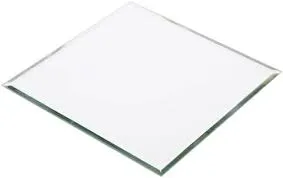

The Installation of Low-E Glass A Comprehensive Guide
In the ever-evolving world of architecture and building materials, low-emissivity (Low-E) glass stands out for its energy efficiency and innovative technology. This type of glass has gained immense popularity in both residential and commercial constructions due to its ability to reflect infrared light while allowing visible light to enter. This guide explores the importance of Low-E glass and provides a detailed overview of its installation process.
What is Low-E Glass?
Low-E glass is coated with a thin metallic layer that enhances its insulation properties. It reduces the amount of heat transfer between the inside and outside of a building. In colder months, Low-E glass prevents heat from escaping, while in warmer months, it helps maintain a cooler interior by reflecting heat away from the glass. This characteristic not only conserves energy but also contributes to lower utility bills and increased comfort for the occupants.
Benefits of Low-E Glass
Installing Low-E glass in your windows has several benefits
1. Energy Efficiency By improving insulation, Low-E glass significantly reduces heating and cooling costs. 2. UV Protection It blocks harmful ultraviolet rays, which can fade fabrics and damage interior furnishings. 3. Enhanced Comfort It helps maintain a consistent indoor temperature, making spaces more comfortable throughout the year. 4. Glare Reduction Low-E coatings can reduce glare from sunlight, making it easier to work or relax indoors. 5. Environmental Benefits Lower energy consumption translates into fewer greenhouse gas emissions, contributing to a healthier environment.
Preparing for Installation
Before installing Low-E glass, proper preparation is crucial. First, determine the type of Low-E glass that best fits your needs. There are several variants, including low-E2 and triple-pane glass, each offering different levels of thermal performance. Research local building codes and regulations to ensure compliance.
Next, gather the necessary tools and materials. Essential tools include a tape measure, level, utility knife, and silicone sealant. Additionally, it’s advisable to wear safety gear, such as gloves and goggles, since glass can break and pose hazards during installation.

The Installation Process
1. Remove the Old Glass If you are replacing existing windows, carefully remove the old glass by prying off the frame or sash. Ensure you take proper safety measures to prevent accidents.
2. Prepare the Frame Clean the window frame thoroughly to remove debris and old sealant. Check for any damage or rot within the frame and repair it as necessary.
3. Measure and Cut the Low-E Glass Measure the opening and cut the Low-E glass to the appropriate size. It’s essential to ensure that the dimensions are spot-on to avoid gaps that can reduce energy efficiency.
4. Install the Low-E Glass Place the Low-E glass into the frame. Use spacers as necessary to ensure it is properly aligned. Once the glass is in place, secure it with glazing points or beads.
5. Seal the Edges Apply silicone sealant around the edges of the glass to create an airtight and watertight seal. This step is crucial to prevent any moisture intrusion and protect the integrity of the installation.
6. Finishing Touches Replace any trim or moulding that was removed in the process. Ensure that the window opens and closes smoothly, and check for any drafts around the edges.
Conclusion
Low-E glass is an invaluable addition to modern building practices, offering significant advantages in energy efficiency, comfort, and environmental impact. By following the outlined installation steps carefully, homeowners and builders can ensure a successful installation that maximizes the benefits of Low-E technology. Investing in Low-E glass is not just about enhancing a building’s aesthetics; it’s also a critical step towards creating a sustainable and energy-efficient future.